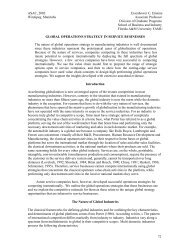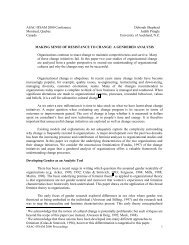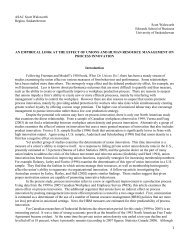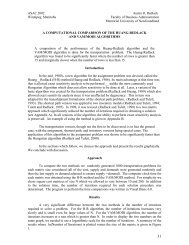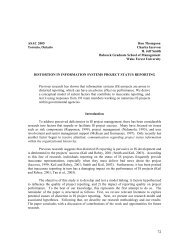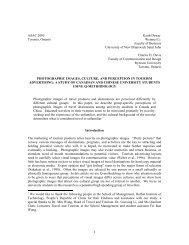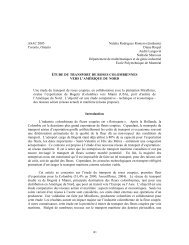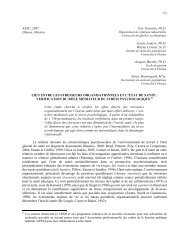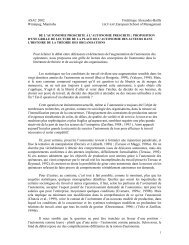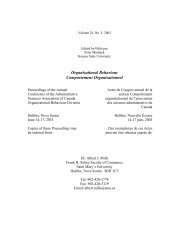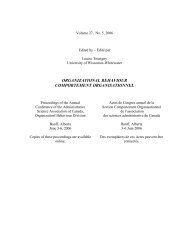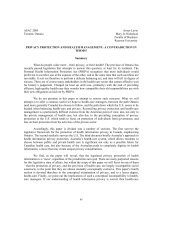104 TOTAL REWARDS FOR TECHNICAL WORKERS
104 TOTAL REWARDS FOR TECHNICAL WORKERS
104 TOTAL REWARDS FOR TECHNICAL WORKERS
You also want an ePaper? Increase the reach of your titles
YUMPU automatically turns print PDFs into web optimized ePapers that Google loves.
Kochanski, Mastropolo and Ledford (2003) were also concerned with retention issues in<br />
their survey of 1999 R&D unit leaders. Respondents were asked which factors are most<br />
important for attracting and retaining R&D workers. The work itself was ranked most important,<br />
followed by long term career opportunities and a unique work culture. Cash compensation<br />
followed distantly. Aligning these with the Total Rewards framework: work itself fits with Work<br />
Environment; career opportunities with Learning and Development; unique work culture with<br />
Work Environment; and cash compensation with Pay. No facets of Benefits were included in the<br />
study. These results are also shown in Table 2.<br />
Chen, Ford and Ferris (1999) did a questionnaire study of 1109 technical workers in<br />
R&D units. Respondents were asked to rate the degree to which various reward types benefited<br />
the organization. The ranking of their rewards was: intrinsic, individual fixed, socioemotional,<br />
collective variable and individual variable. The correspondences with Total Rewards have<br />
intrinsic and socioemotional fitting under Work Environment; while individual fixed, collective<br />
variable and individual variable fit under Pay. Thus, their finding was that Work Environment<br />
rewards have greater benefits for the organization than does Pay, as seen in Table 2.<br />
Keller, Julian and Kedia (1996) studied the effect of a number rewards-related variables<br />
on the performance of 658 industrial and 1033 academic R&D teams. Independent variables<br />
included the degree of participation and cooperation in the team; the scientific and social<br />
importance of the work being performed by the team; and the satisfaction of team members with<br />
remuneration, opportunities for advancement, and supervision. The dependent variable was team<br />
performance. Work importance had the strongest effect upon productivity, followed by<br />
participation and cooperation. The three satisfaction variables had no consistent effect. Aligning<br />
these results with Total Rewards: Work Environment (importance of the work,<br />
participation/cooperation) clearly affects the productivity of R&D workers. There is minimal<br />
support for an effect of pay satisfaction on productivity, as shown in Table 2.<br />
Four papers comparing multiple rewards in the R&D context have now been reviewed<br />
and the results summarized in Table 2. They show that all four rewards categories are important<br />
to R&D workers and that Work Environment is the most important. A number of different<br />
rewards under Work Environment are individually important to R&D workers. There is little<br />
empirical work which bridges all four categories and more such research should be done. Now to<br />
papers focussing on only one reward category, starting with Learning and Development.<br />
Learning and Development<br />
Cordero, DiTomaso and Farris (1994) studied job satisfaction, turnover and career<br />
development opportunities in 3163 R&D professionals and found a positive relationship between<br />
managerial development opportunities and job satisfaction, but no relationship between technical<br />
development opportunities and job satisfaction. They also found that those with technical<br />
development opportunities were more likely to leave the employer but less likely to leave R&D<br />
for other areas of the firm. Those with managerial development opportunities were more likely to<br />
Medcof_ASAC2005<br />
107



